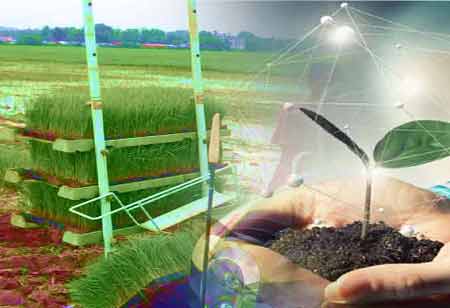Thank you for Subscribing to Agri Business Review Weekly Brief
Harnessing Agricultural Science to Enhance Hybrid Seed Production
Seed market growth will fluctuate over the long term, while inflation and supply chain concerns will continue in 2023.

By
Agri Business Review | Wednesday, February 15, 2023
Stay ahead of the industry with exclusive feature stories on the top companies, expert insights and the latest news delivered straight to your inbox. Subscribe today.
Growing a seed requires more than waiting for it to sprout. Growing roots, transforming lands, and establishing communities are all part of creating life; a seed is the beginning of the future.
FREMONT, CA: Seed market growth will fluctuate over the long term, while inflation and supply chain concerns will continue in 2023.
Consumer preferences will change under a projected economic downturn, industrial policies will have to be amended to conform to growing environmental concerns, raw material costs will fluctuate significantly due to geopolitical tensions, and economic turbulence is one of the critical challenges that the Seed industry players will have to deal with during the short and medium term.
Global Seed Market Analysis Report provides in-depth qualitative and quantitative analysis for the next eight years to 2030. It analyzes the current situation, estimates seed market potential across a range of product segments, and evaluates their market penetration in various applications and end-users.
The profitability of hybrid seed production is inextricably linked to variability. The lower the yield, the fewer seeds are available to sell. The variable nature of hybrid seed production (cold weather, overly warm temperatures, flash drought, etc.) makes it particularly important for farmers to ensure enough seed to meet demand. Because of the variables involved in hybrid seed production, farmers must do what they can to improve their production. They put themselves in a better position to react to (or even predict!) those variations, enhancing their chances of making money.
Farmers cannot control the weather or how it affects their plants, but they can improve their seed production techniques—or, at the very least, ensure their sales team is aware of the forecasted yield so that they can sell accordingly. Providing a customer-friendly experience and delivering what's ordered will guarantee the company can earn loyal customers.
Ensuring Product Purity
The most crucial factor here is product purity. The entire production is more or less doomed without adequate product purity. Seed testing is essential for ensuring hybrid seeds meet genetic purity standards. However, when it comes to corn, detasseling must also be validated to provide a high level of purity of female tassel removal to prevent self-pollination.
Agricultural technology makes detasseling much easier and more accurate than manual methods when it comes to validation. Drones can fly across a 100-acre field in 60 minutes (except our PHX, which flies in half that time!) and provide highly accurate tassel count data immediately following flight completion.
Yield forecasting
Precision is crucial when forecasting yield. Quantifying the Stand Count and planted crop area allows farmers to ensure that product quotas are met, impacting marketing, sales, and customer service.
Certainly, seed growers can estimate using manual methods, but agricultural data has advanced significantly over the last few decades. Technology enables farmers to capture aerial imagery, analyze it automatically and precisely, and forecast their yields more accurately than manual methods.
Monitoring and decision-making in real-time
Plant breeding agriculture relies heavily on borders; edge-of-field imagery from drones and satellites can verify those borders. With today's agriscience technology, instead of manual methods, where it takes considerable time and effort to ensure proper detasseling, farmers can see how many tassels are per row with imagery, so they can go in and remove the correct number of tassels in a matter of minutes.
The imagery and analytics integrate seamlessly, allowing farmers to spot potential issues before they become a problem—and adjust their management practices accordingly.
Data Transparency
Many in the industry pull data from multiple sources and analyze it on various platforms. This makes using technology that supports data standardization and scalable measurements essential since standardizing data when dealing with a single dataset isn't a big deal.
However, for enterprise-grade integrations and reporting, that process must be automated and simple so that farmers can easily pull the information they want into whichever program they want, generating the analytics and reports necessary to make decisions or share their findings.





